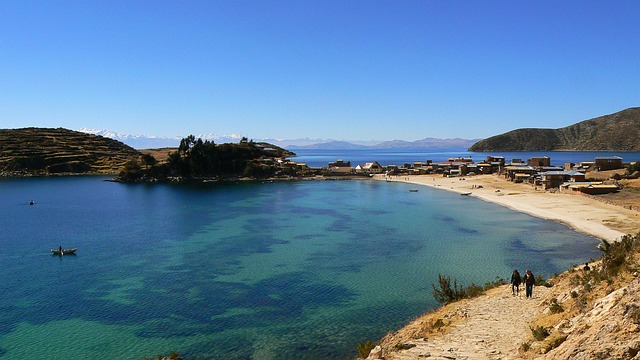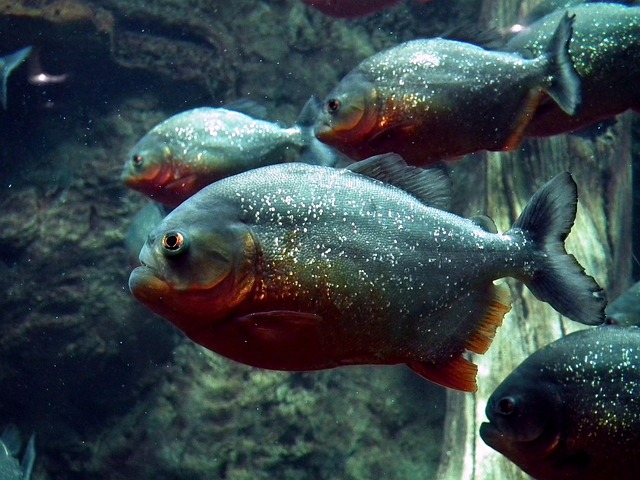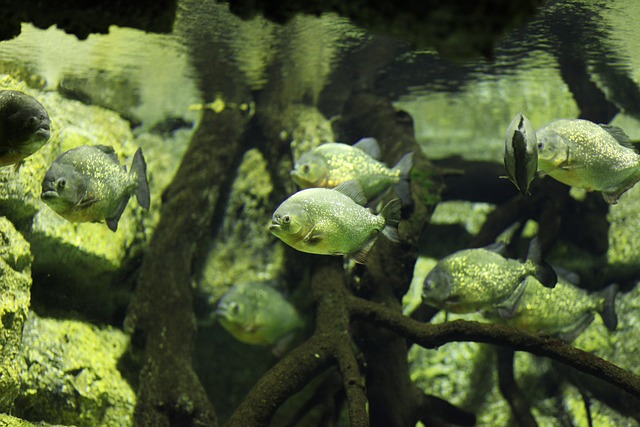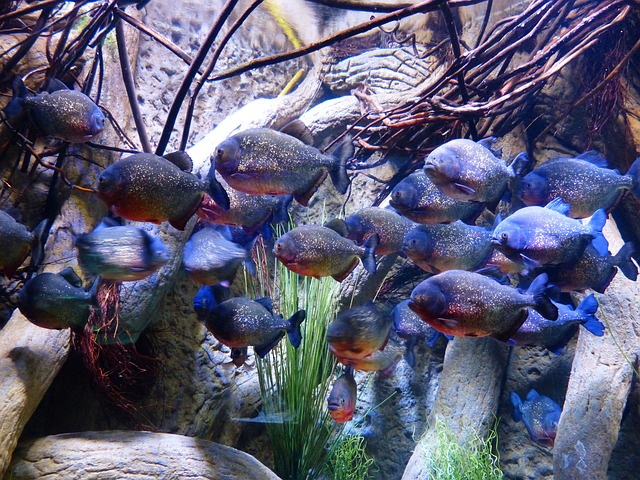Welcome to Lake Titicaca, one of the world’s most enchanting destinations nestled in the heart of the Andes. This spectacular lake is not only one of the highest navigable lakes in the world, but it also holds significant cultural and historical value for the surrounding communities.
Our aim with this article is to take you on a journey to discover the natural beauty and cultural richness of this hidden gem.
From its geographical and historical importance to its stunning landscape and diverse ecosystem, there is so much to explore and experience at Lake Titicaca.
So sit back, relax, and let us guide you through this breathtaking destination.
The Geographical and Historical Significance of Lake Titicaca
Lake Titicaca is a breathtaking natural wonder located high in the Andes mountains, straddling the borders of Peru and Bolivia. At 12,507 feet above sea level, it is the world’s highest navigable lake, earning it a spot on many travelers’ bucket lists. But beyond its impressive altitude, Lake Titicaca holds immense cultural and historical significance for the surrounding communities.

The lake itself is a marvel of nature, measuring 118 miles long and 50 miles wide, with a maximum depth of 932 feet. Its crystal-clear waters are fed by numerous rivers and streams, and its shores are dotted with small islands and peninsulas. The landscape surrounding the lake is equally stunning, with snow-capped peaks and lush green valleys providing a picturesque backdrop.
But beyond its physical beauty, Lake Titicaca holds a deep cultural significance for the indigenous communities who call it home. For the Inca civilization, the lake was considered a sacred place, believed to be the birthplace of the sun god and the ancestors of the Inca emperors. Even today, many indigenous communities view the lake as a sacred site and perform ceremonies and rituals to honor its spiritual significance.
Aside from its cultural importance, Lake Titicaca also plays a crucial role in the livelihoods of the local communities. The lake’s waters provide freshwater for irrigation and fishing, sustaining the agricultural and fishing industries that are essential to the Andean region’s economy. The communities living around the lake have developed a deep understanding of the lake’s ecosystem and have implemented sustainable practices to ensure its preservation for future generations.
In addition, Lake Titicaca is home to a diverse array of plant and animal species, making it a vital hotspot for biodiversity. The lake’s unique ecosystem, with its calm waters and moderate temperatures, has allowed for the development of numerous endemic species. This includes the giant frog, a critically endangered species found only in Lake Titicaca, and the many species of birds and fish that call the lake home.
The historical significance of Lake Titicaca is also evident in the various ruins and archaeological sites found in the surrounding areas. The most famous of these is the Island of the Sun, considered the birthplace of the Inca civilization. Here, visitors can explore ancient temples and ruins, providing a glimpse into the rich history of the area.
Overall, Lake Titicaca is a truly remarkable destination that offers visitors the chance to not only experience its natural beauty but also to immerse themselves in the cultural heritage of the Andean region. It is a place where history and nature converge, providing a unique and unforgettable travel experience.
Exploring the Natural Beauty of Lake Titicaca
Nestled in the heart of the Andes, Lake Titicaca is a truly remarkable destination waiting to be discovered. Known as one of the world’s highest navigable lakes, it boasts a breathtaking landscape and a unique ecosystem that attracts travelers from all over the world. In this section, we will delve into the natural beauty of this hidden gem and the various ways in which you can experience it.
The first thing that strikes you when you arrive at Lake Titicaca is the stunning landscape that surrounds it. The crystal clear blue waters of the lake are surrounded by snow-capped mountains, creating a picture-perfect backdrop for your adventures. The lake itself is an impressive 12,500 feet above sea level, making it the highest navigable lake in the world. Its size is equally impressive, covering an area of 3,232 square miles and reaching a depth of 932 feet. These impressive numbers only add to the magnificence of this natural wonder.
But it’s not just the physical features of Lake Titicaca that make it so special. The lake has been a significant cultural and historical site for centuries. It was considered a sacred place by the Inca civilization, and many believe that the lake is the birthplace of their revered Sun God, Inti. The indigenous communities living around the lake also hold a deep connection to it, considering it a source of life and sustenance. This cultural and historical significance can be felt throughout your visit, adding a deeper layer to your experience.
In terms of biodiversity, Lake Titicaca is home to a diverse range of plant and animal species. Its high altitude and unique ecosystem support a variety of flora and fauna, making it a paradise for nature lovers. The lake and its surrounding areas are home to over 500 different species of plants and 530 species of animals, including rare and endangered species such as the giant frog and the Andean cat. For those interested in birdwatching, the lake is a must-visit destination, with over 60 species of birds found here, including the iconic Andean condor.
One of the best ways to explore the natural beauty of Lake Titicaca is through ecotourism activities. The area offers fantastic opportunities for hiking, with various trails that lead to breathtaking viewpoints and hidden Inca ruins. You can also take a boat ride on the lake, allowing you to get up close and personal with the stunning landscape and wildlife. Additionally, there are several community-based ecotourism programs that offer visitors an authentic experience of the local culture and way of life while contributing to the sustainable development of the area.
An essential part of the Lake Titicaca experience is its indigenous communities, who have lived on its shores for centuries. The most famous of these communities are the Uros people, who live on floating islands made of reeds. Visiting their villages and learning about their traditional way of life is an unforgettable experience. You can also participate in cultural activities such as weaving and cooking traditional dishes, immersing yourself in the rich cultural heritage of the area.
The Cultural Richness of Lake Titicaca
Nestled high in the Andes mountains, Lake Titicaca is not only a natural wonder but also a cultural treasure. The surrounding region is home to indigenous communities who have inhabited the area for centuries and have a deep connection to the lake. In this section, we will explore the cultural richness of Lake Titicaca and the unique experiences it offers.
The first thing that comes to mind when thinking about the culture of Lake Titicaca is the Uros people. These fascinating people live on floating islands made of reeds that are found on the lake. They have preserved their traditional way of life, living off the lake’s resources and crafting intricate handicrafts. Visitors can take a boat tour to these islands and learn about their way of life, customs, and traditions.
In addition to the Uros, there are other indigenous communities living on the shores of Lake Titicaca, such as the Quechua and Aymara people. These communities have a strong connection to the land and the lake, which is reflected in their daily lives, customs, and beliefs. These communities also showcase their unique crafts, including weaving and pottery, which have been passed down through generations.
One of the best ways to immerse yourself in the local culture is by participating in a homestay with a local family. This allows visitors to get a firsthand experience of the daily life of the indigenous communities and learn about their customs and traditions. You can also learn how to cook traditional dishes and participate in daily chores, such as farming and fishing.
A visit to Lake Titicaca also offers the opportunity to witness traditional festivals and ceremonies. These events are an integral part of the local culture and are celebrated with colorful dances, music, and traditional costumes. Some popular festivals include the Fiesta de la Candelaria and the Kantuta Festival, which are held to honor the Virgin Mary and the Andean flower, respectively.
The local cuisine is also a significant aspect of the cultural richness of Lake Titicaca. The region’s cuisine is heavily influenced by the indigenous communities, with dishes featuring fresh fish, potatoes, quinoa, and local herbs and spices. Some must-try dishes include “trucha a la parrilla” (grilled trout) and “chupe” (a traditional soup).
While exploring the cultural richness of Lake Titicaca, it is essential to respect the local customs and traditions. This includes dressing appropriately, asking for permission before taking photos, and seeking guidance from a local guide. By doing so, visitors not only show respect but also help preserve the cultural heritage of the region.
Preserving the Beauty and Culture of Lake Titicaca
As a jewel of the Andes, Lake Titicaca is not only a breathtaking natural wonder but also a cultural heritage for the indigenous communities living in its surroundings. However, this stunning lake and its unique ecosystem are facing environmental threats that could potentially harm its beauty and cultural richness. As responsible travelers, it is our duty to protect and preserve this hidden gem for future generations to discover and appreciate. In this section, we will discuss the importance of preserving the beauty and culture of Lake Titicaca and how we can contribute to this cause.
First and foremost, one of the main environmental threats facing Lake Titicaca is pollution. The lake is a source of freshwater for the Andean region, and its water quality is essential for the survival of the surrounding communities and the diverse species of plants and animals that call it home. Unfortunately, with the increase in tourism and development in the area, pollution from waste and industrial activities has become a significant concern. To combat this issue, several initiatives have been put in place, such as regular clean-up campaigns and waste management programs. As visitors, we can do our part by disposing of our trash responsibly, avoiding single-use plastics, and participating in clean-up efforts.
Another threat to Lake Titicaca’s beauty and culture is overfishing. The lake is a vital source of food and income for the local communities, and unsustainable fishing practices can deplete its resources and disrupt the delicate balance of its ecosystem. To address this issue, sustainable fishing techniques have been introduced, and regulations have been put in place to preserve the lake’s fish population. As tourists, we can support these efforts by choosing to consume sustainably caught fish and avoiding endangered species.
In addition to environmental threats, the cultural heritage of Lake Titicaca is also at risk. The unique lifestyle and traditions of the indigenous communities living in the area are in danger of being lost due to modernization and cultural assimilation. To preserve their culture and promote sustainable tourism, initiatives such as homestays with local families and cultural exchange programs have been introduced. These opportunities not only provide an authentic cultural experience for tourists but also provide a source of income for the local communities. By participating in these activities and respecting the customs and traditions of the people, we can contribute to the preservation of their culture.
Furthermore, responsible tourism plays a crucial role in preserving the beauty and culture of Lake Titicaca. By choosing sustainable accommodation options, supporting locally owned businesses, and respecting the local culture and customs, we can ensure that our travels have a positive impact on the environment and the communities. This also includes being mindful of our actions when visiting popular tourist attractions such as the floating islands and Inca ruins. These sites are fragile and should be treated with care to avoid causing damage.

How to Experience Lake Titicaca
Located in the heart of the Andes, Lake Titicaca is a destination that offers both natural beauty and cultural richness. If you are planning a trip to this hidden gem, here are some tips on how to make the most of your experience.
Getting There:
The most common way to reach Lake Titicaca is by flying into either Juliaca or La Paz airport. From there, you can take a bus or taxi to the lake. Another option is to take a scenic train ride from Cusco to Puno, which offers stunning views of the Andean landscape. Once you arrive at the lake, you can explore the area by boat or by taking a tour.
Where to Stay:
For a truly unique experience, consider staying with a local family on one of the floating islands in Lake Titicaca. This allows you to immerse yourself in the traditional lifestyle of the Uros people and learn about their customs and traditions. If you prefer more traditional accommodations, there are also hotels and hostels available in the nearby towns of Puno and Copacabana.
Must-See Attractions:
A visit to Lake Titicaca would not be complete without visiting the Uros floating islands. These man-made islands are made entirely of reeds and provide insight into the traditional way of life of the Uros people. You can also visit the island of Taquile, known for its textile handicrafts and stunning views of the lake. For a taste of ancient Inca culture, make sure to visit the ruins of Sillustani, located on a peninsula overlooking the lake.
Outdoor Activities:
For nature lovers, Lake Titicaca offers plenty of opportunities for outdoor activities. You can hike to the top of Isla del Sol, the largest island in the lake, for panoramic views and a glimpse into Inca history. The lake is also home to a diverse array of plant and animal species, making it a great spot for birdwatching and nature walks.
Experience the Local Culture:
One of the highlights of visiting Lake Titicaca is getting to know the local culture and customs. You can do this by taking part in a homestay, where you can live with a local family and learn about their daily life. You can also attend traditional festivals and ceremonies, such as the Andean New Year celebration in June, to experience the rich culture of the region.
Respect the Local Culture:
It is important to remember that Lake Titicaca is not just a tourist destination, but also a place where people live and work. As such, it is essential to respect the local culture and customs. Make sure to ask for permission before taking photos of individuals or their homes, and always be mindful of your actions and words.
Support Sustainable Practices:
As with any tourist destination, there are environmental threats facing Lake Titicaca, such as pollution and overfishing. To help preserve the natural beauty and cultural richness of the area, make sure to support sustainable practices. This can include choosing eco-friendly tour operators, avoiding single-use plastics, and buying locally made souvenirs to support the local economy.



















